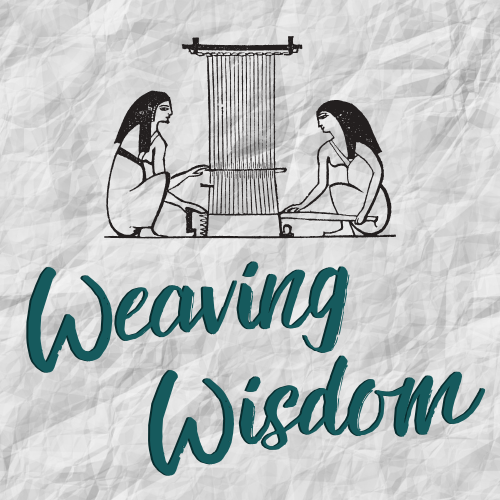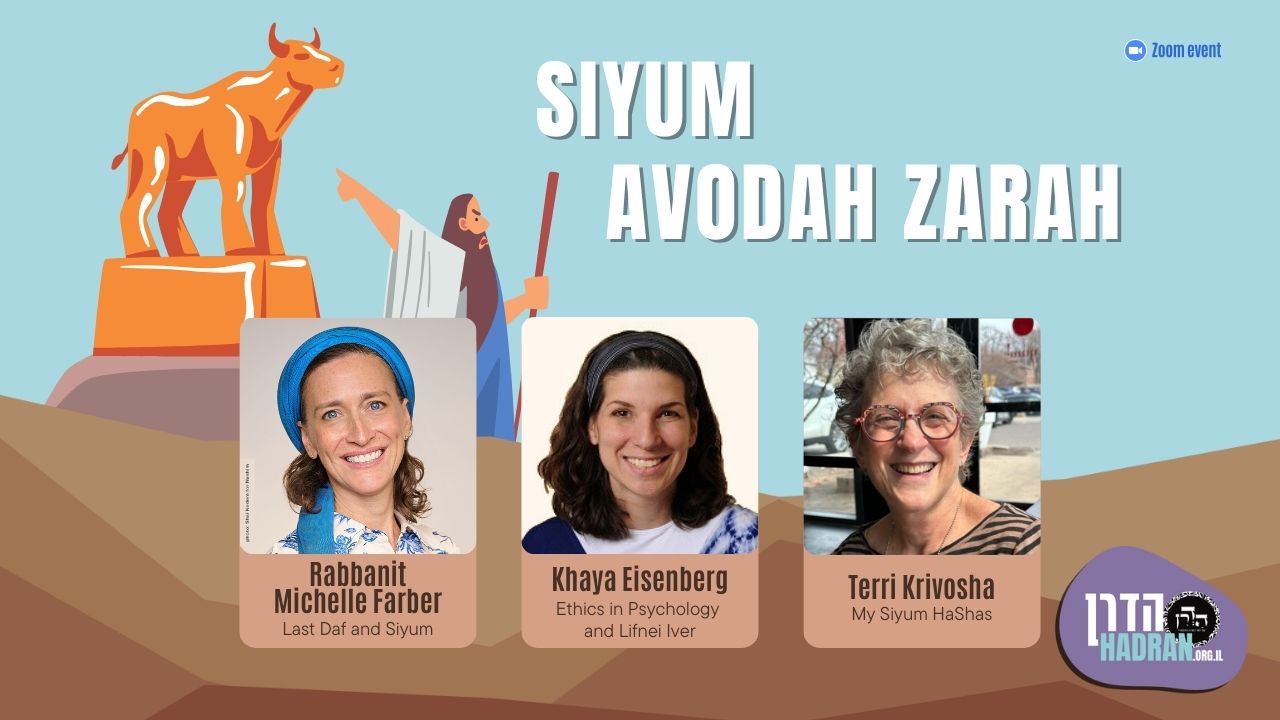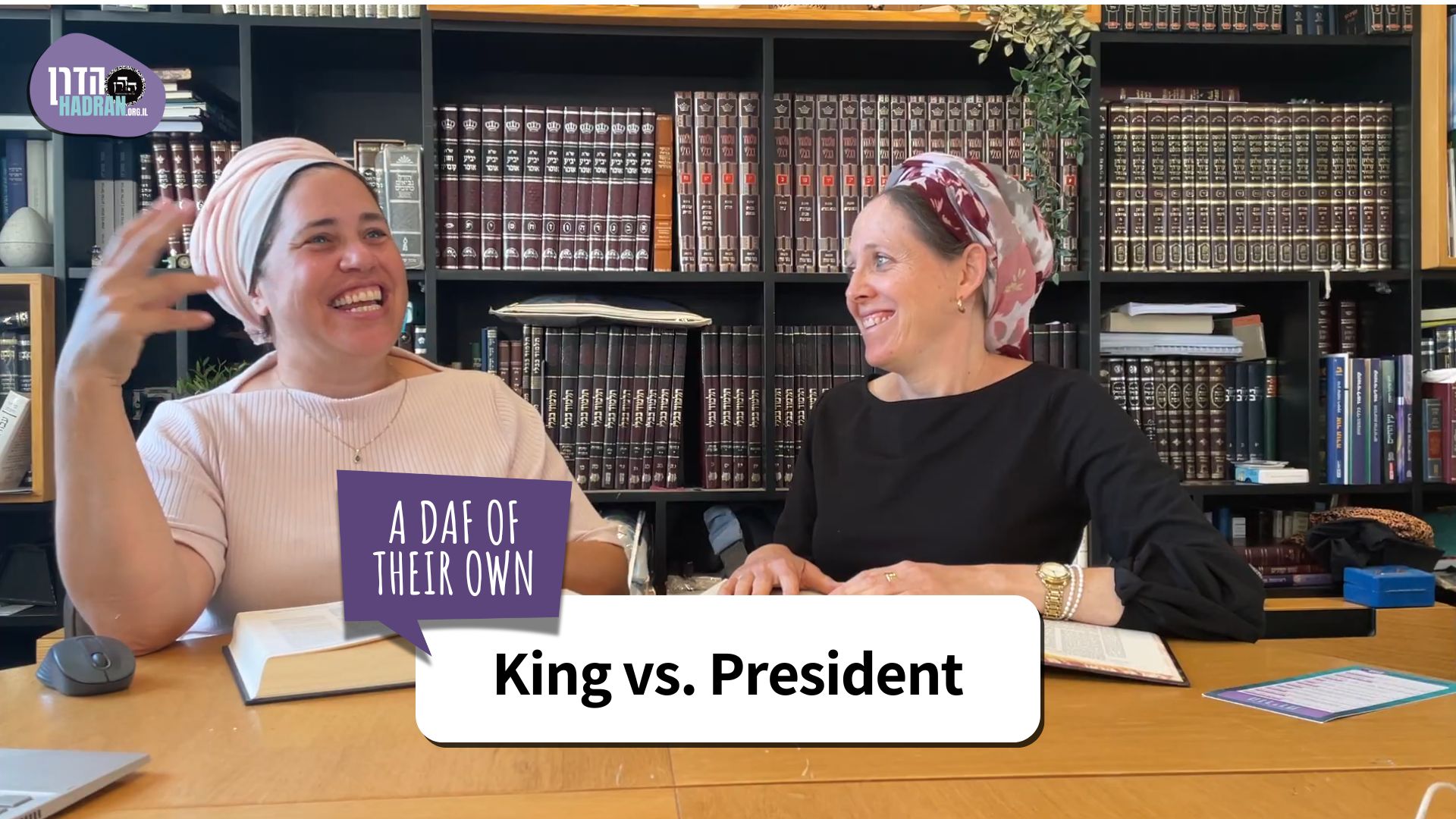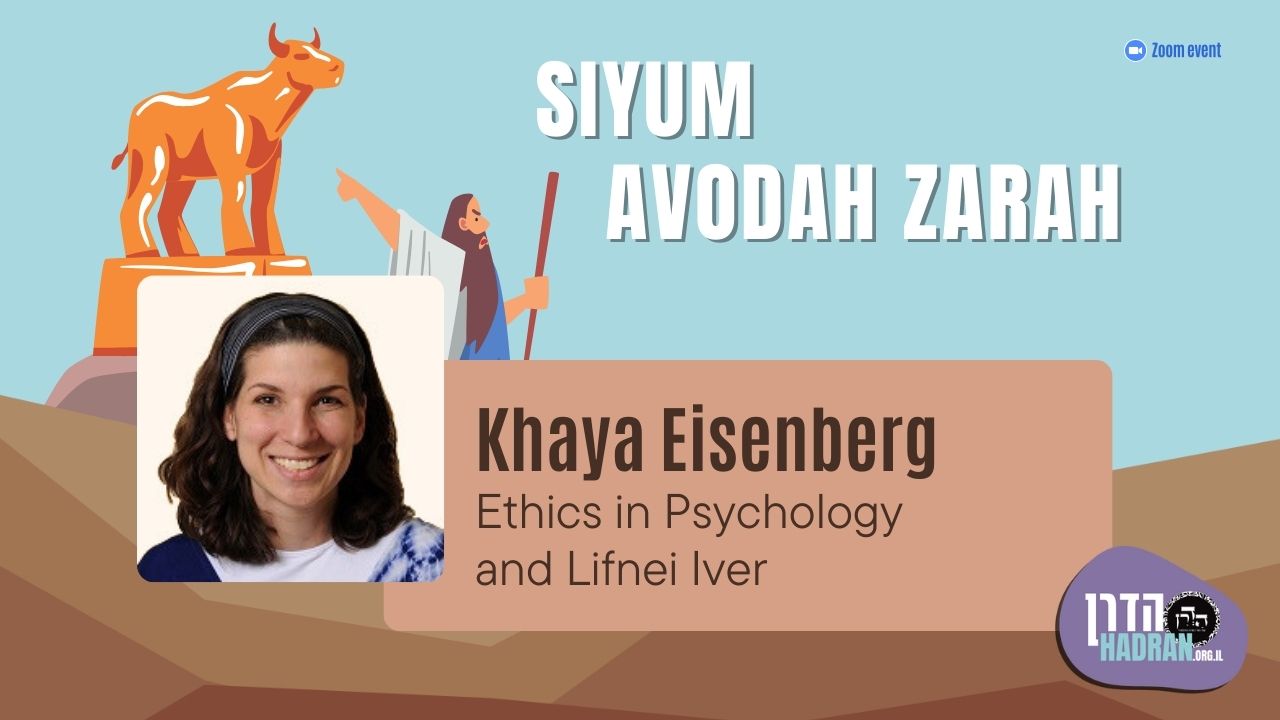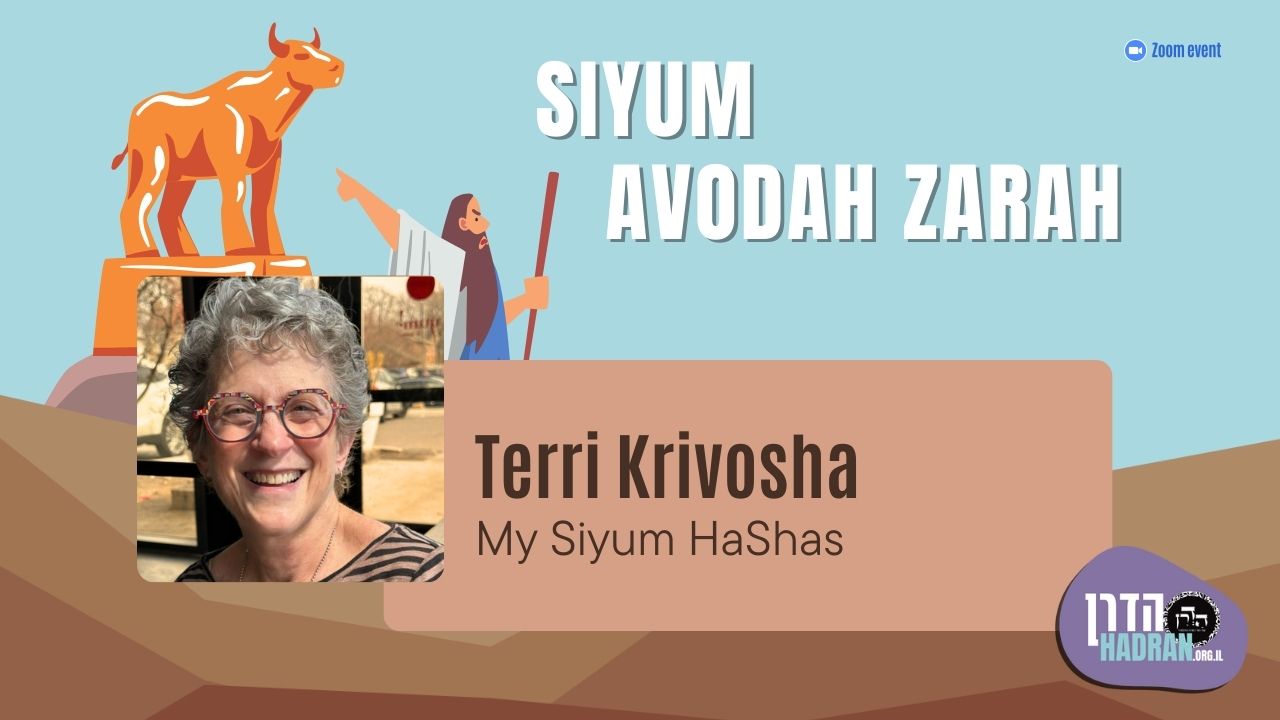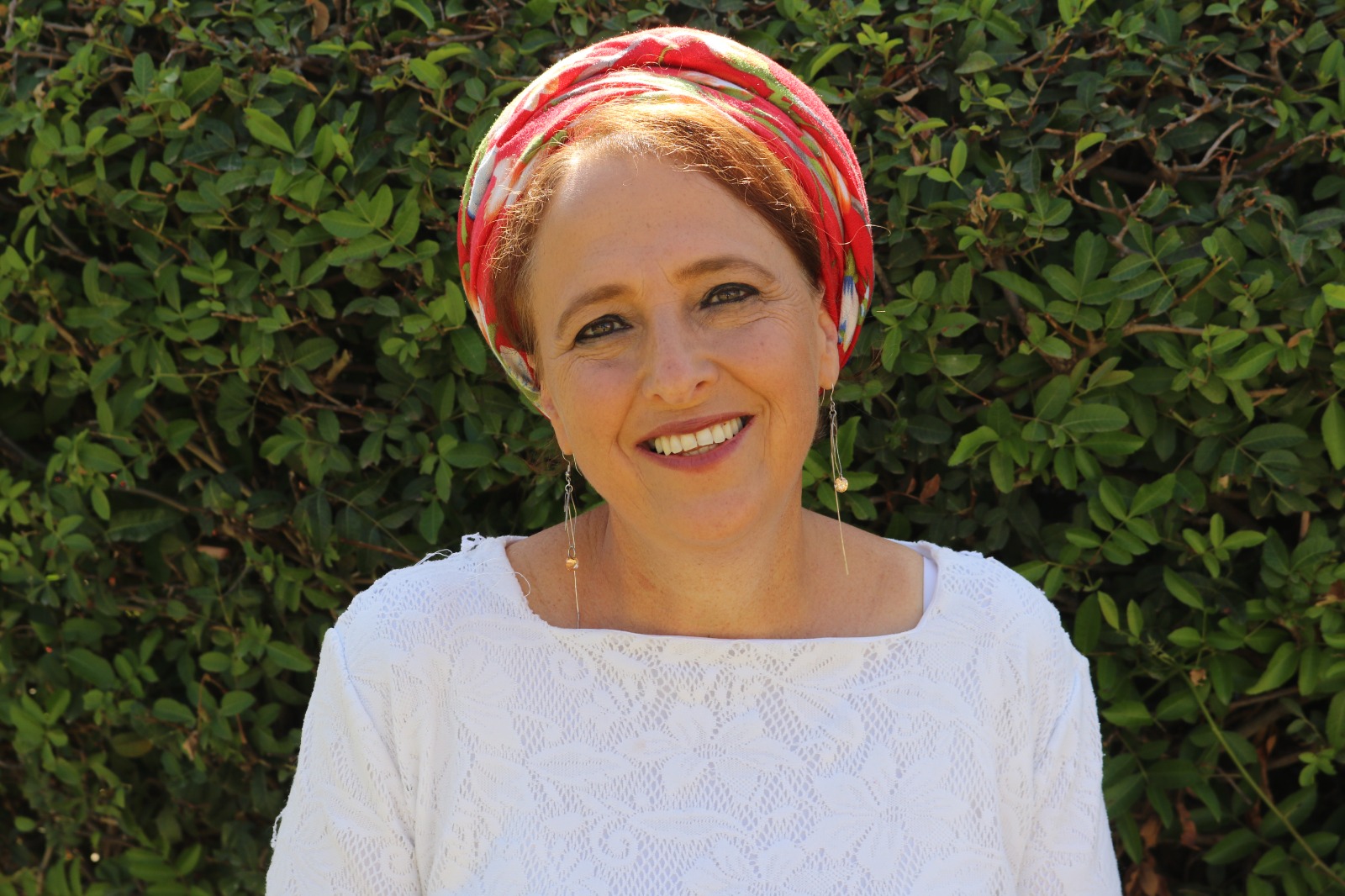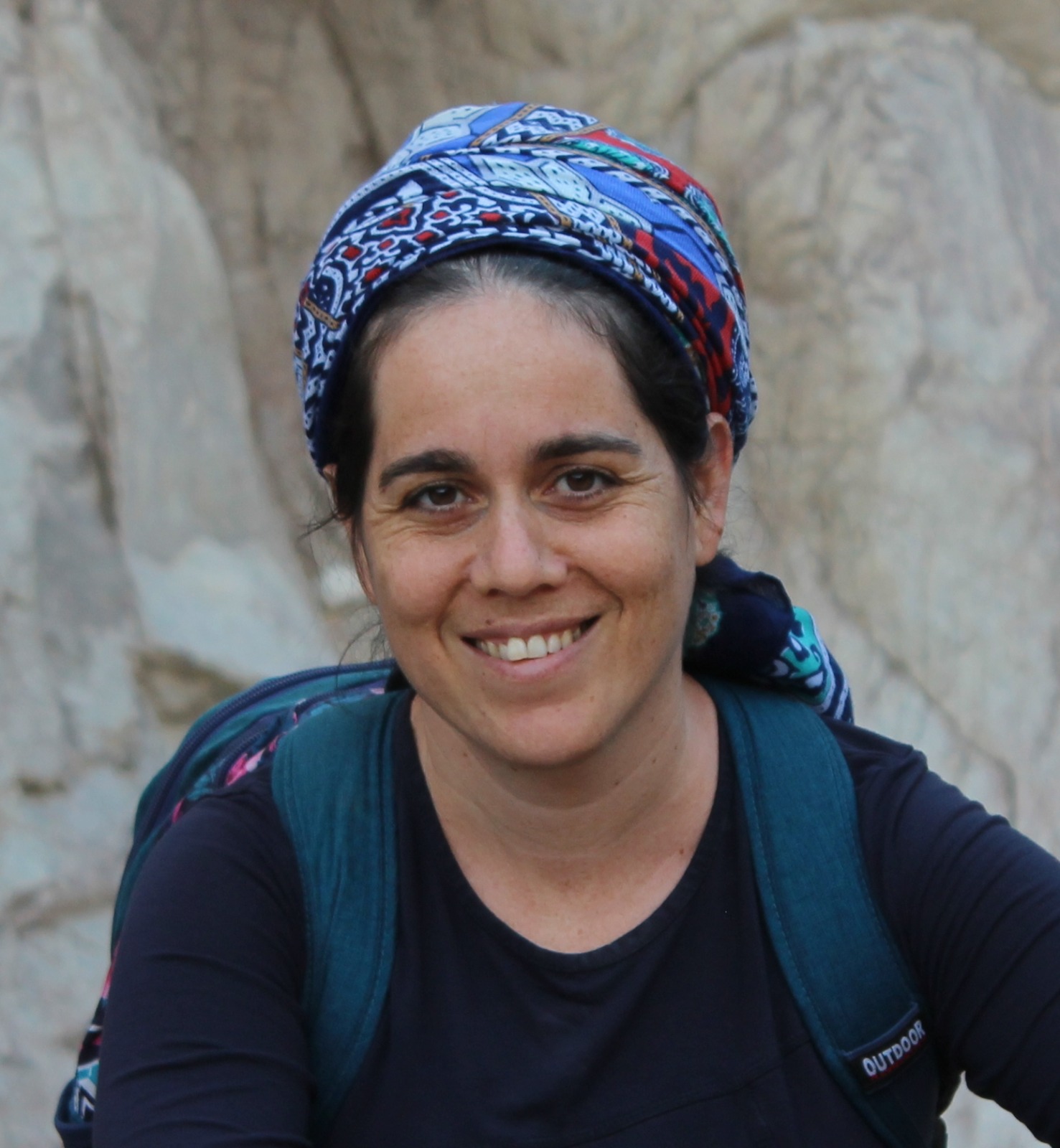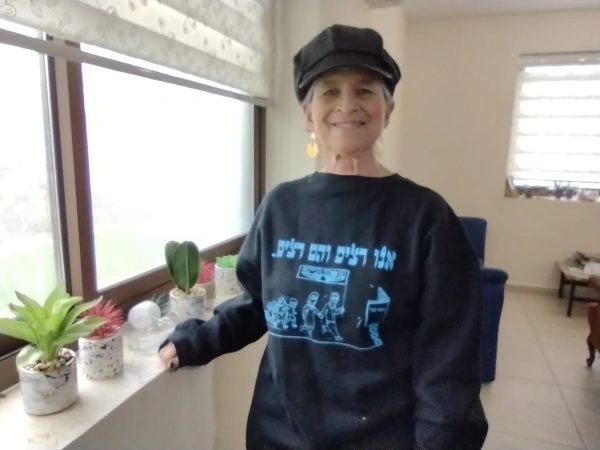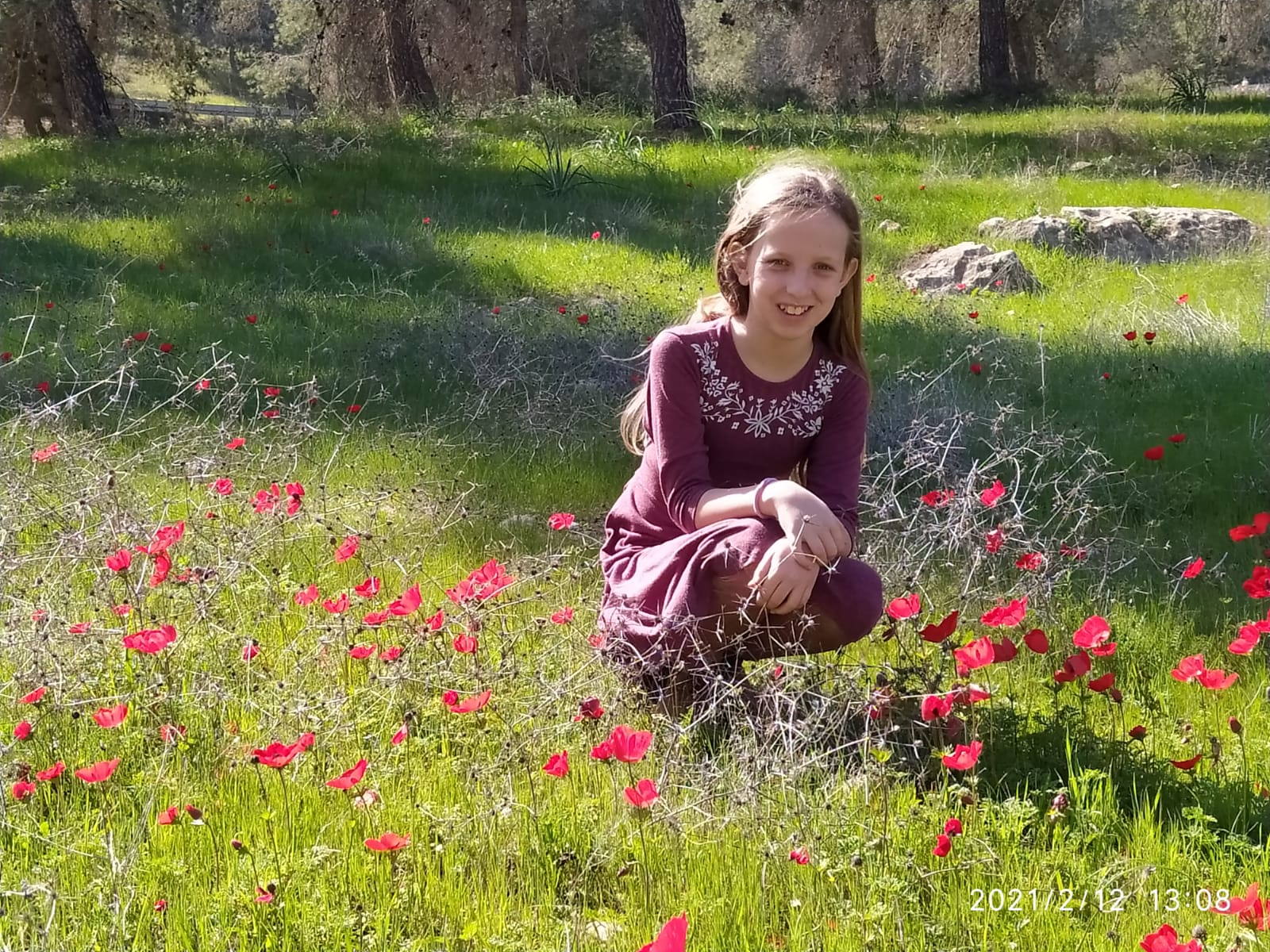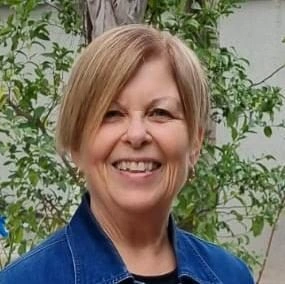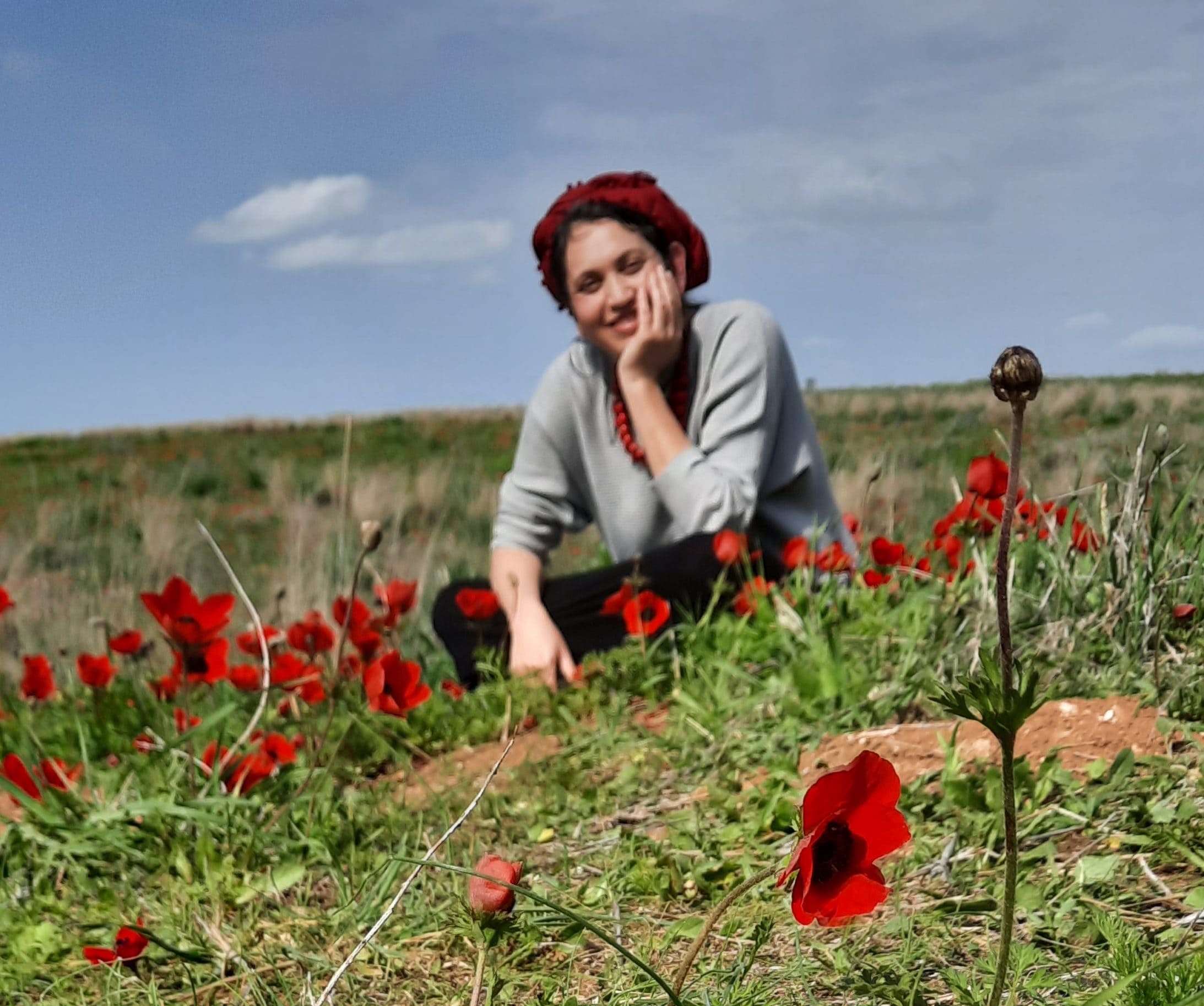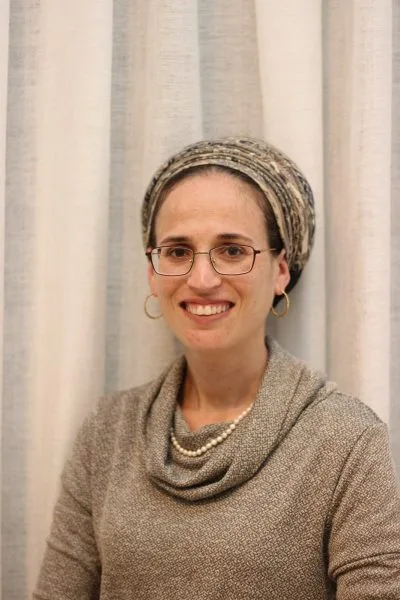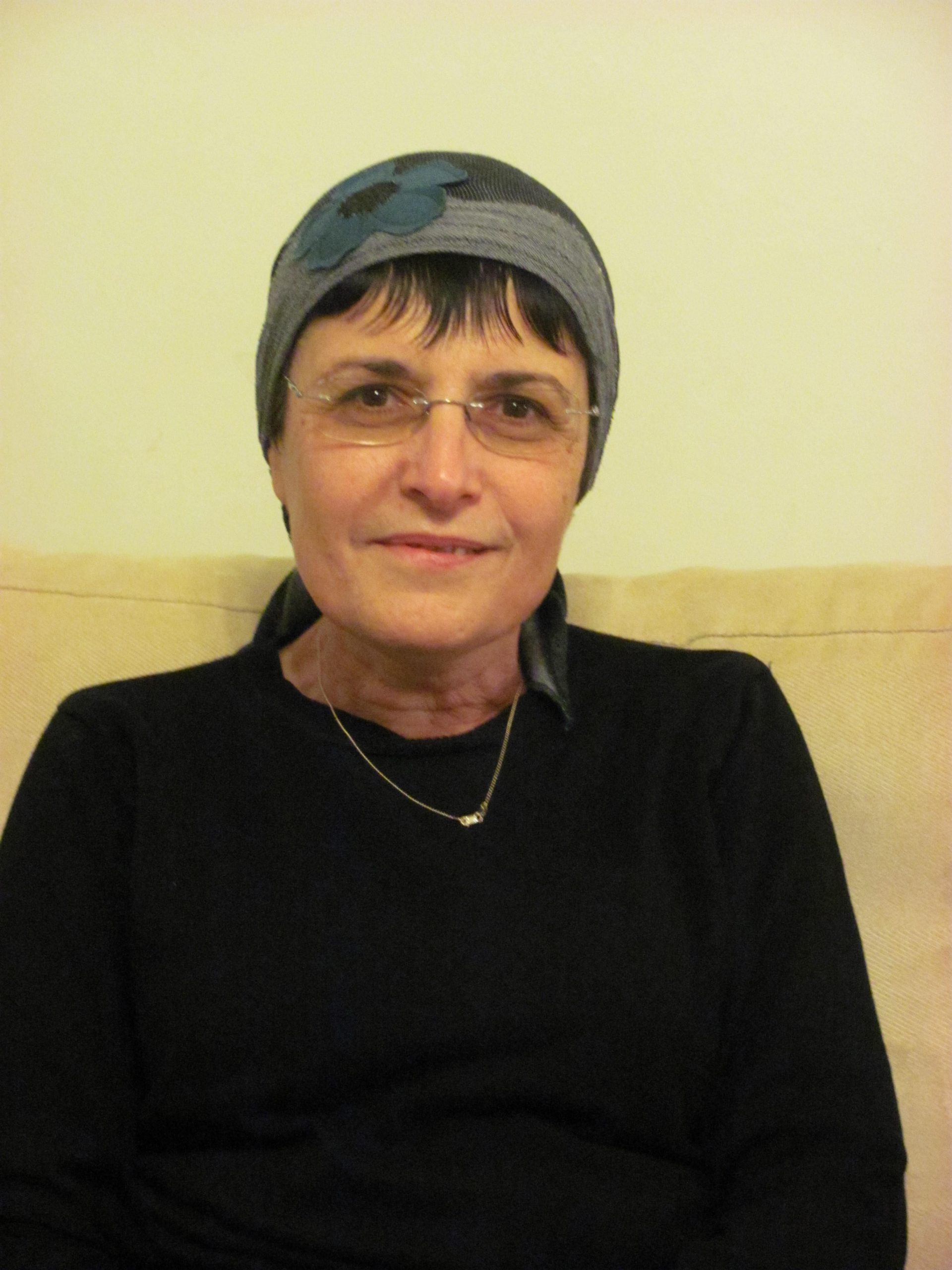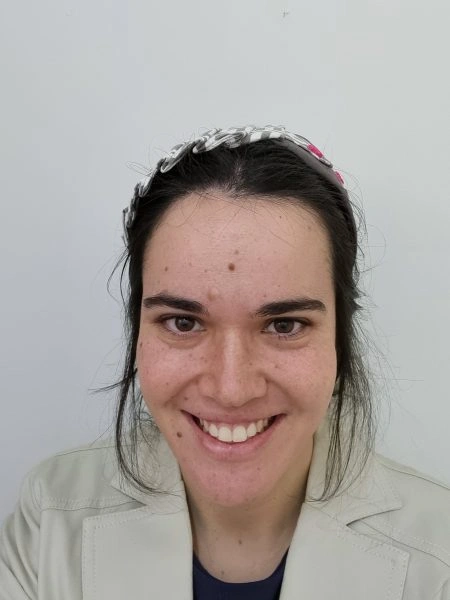עירובין פד
בְּנֵי עֲלִיָּיה. וּמַאי קָרוּ לַהּ מִרְפֶּסֶת? דְּקָסָלְקִי בְּמִרְפֶּסֶת, אַלְמָא: כָּל לָזֶה בְּשִׁלְשׁוּל וְלָזֶה בִּזְרִיקָה — נוֹתְנִין אוֹתוֹ לָזֶה שֶׁבְּשִׁלְשׁוּל!
It is referring to the residents of an upper story above the balcony; and if so, why do we call the upper story a balcony? Because the residents of the upper story ascend and descend to and from their apartments by way of the balcony. From here the Gemara infers: With regard to any place that can be used by one set of residents only by lowering an object down to it and by another set of residents only by throwing an object on top of it, we grant Shabbat use of it to those who can use it by lowering, as the residents of the upper story who use the area ten handbreadths high do so by means of lowering. Apparently, the mishna supports Shmuel and presents a difficulty to Rav.
כִּדְאָמַר רַב הוּנָא: לְאוֹתָן הַדָּרִים בַּמִּרְפֶּסֶת. הָכִי נָמֵי: לְאוֹתָן הַדָּרִין בַּמִּרְפֶּסֶת.
The Gemara rejects this argument: As Rav Huna said with regard to a different issue discussed in a subsequent mishna, that the tanna is referring to those who live in apartments that open directly onto the balcony rather than those who live in an upper story; here too, the tanna is speaking of those who live in apartments that open directly onto the balcony. In this case, the use of an area ten handbreadths high is convenient for the residents of the balcony, as it is on their level; whereas its use is relatively inconvenient for the residents of the courtyard. Consequently, the right to use this area is granted to the residents of the balcony.
אִי הָכִי, אֵימָא סֵיפָא: פָּחוֹת מִכָּאן — לֶחָצֵר. אַמַּאי? לָזֶה בְּפֶתַח וְלָזֶה בְּפֶתַח הוּא!
The Gemara raises an objection: If so, say the next clause of the mishna: Anything that is lower than this, i.e., lower than ten handbreadths, its use belongs to the courtyard. But why should this be the halakha? This is similar to a case of residents of two courtyards who have equally convenient access to a certain area. The residents of this courtyard access the area through one entrance, and the residents of that courtyard access the area through another entrance. In our case, the use of the area is equally convenient for the inhabitants of both the balcony and the courtyard; why should the latter be granted exclusive right of use?
מַאי ״לֶחָצֵר״? אַף לֶחָצֵר. וּשְׁנֵיהֶן אֲסוּרִין.
The Gemara answers: What is the meaning of the phrase to the courtyard? It means also to the courtyard. In other words, even the residents of the courtyard can make use of this mound or post, and therefore residents of both the courtyard and the balcony are prohibited. If residents of two domains can conveniently use a single area and they did not establish an eiruv between their domains, they are all prohibited to carry in that area.
הָכִי נָמֵי מִסְתַּבְּרָא, מִדְּקָתָנֵי סֵיפָא: בַּמֶּה דְּבָרִים אֲמוּרִים בִּסְמוּכָה. אֲבָל בְּמוּפְלֶגֶת, אֲפִילּוּ גָּבוֹהַּ עֲשָׂרָה טְפָחִים — לֶחָצֵר. מַאי ״לֶחָצֵר״? אִילֵּימָא: לֶחָצֵר וּשְׁרֵי, אַמַּאי? רְשׁוּתָא דְּתַרְוַיְיהוּ הוּא!
The Gemara comments: So too, it is reasonable to explain the mishna in this manner, as it was taught in the latter clause of the mishna: In what case is this statement said? When the mound or embankment is near the balcony; but in a case where it is distant from it, even if it is ten handbreadths high, its use belongs to the courtyard. What, then, is the meaning of the phrase to the courtyard in this context? If you say it means to the residents of courtyard, and therefore the use of the mound or embankment is permitted to them, why should this be so? It is the domain of the residents of both the courtyard and the balcony, as the mound or embankment is positioned near enough to the balcony for its residents to use it as well.
אֶלָּא מַאי ״לֶחָצֵר״ — אַף לֶחָצֵר, וּשְׁנֵיהֶן אֲסוּרִין. הָכִי נָמֵי: מַאי ״לֶחָצֵר״ — אַף לֶחָצֵר, וּשְׁנֵיהֶן אֲסוּרִין. שְׁמַע מִינַּהּ.
Rather, what is the meaning of the phrase to the courtyard? It means also to the courtyard. And, consequently, as the residents of both the courtyard and the balcony can use it, both are prohibited to carry there on Shabbat. Here too, in the earlier part of the mishna, what is the meaning of the clause to the courtyard? It likewise means also to the courtyard, and therefore both sets of residents are prohibited to carry. The Gemara concludes: Indeed, learn from this that this is the correct interpretation of this phrase.
תְּנַן: חוּלְיַית הַבּוֹר וְהַסֶּלַע שֶׁהֵן גְּבוֹהִין עֲשָׂרָה — לַמִּרְפֶּסֶת, פָּחוֹת מִכָּאן — לֶחָצֵר. אָמַר רַב הוּנָא: לְאוֹתָן הַדָּרִים בַּמִּרְפֶּסֶת.
The Gemara attempts to adduce further proof from the mishna to resolve the dispute between Rav and Shmuel. We learned in the mishna: The embankments that surround a cistern or a rock that are ten handbreadths high may be used by the balcony; if they are lower than that height, the right to use them belongs to the courtyard. The Gemara assumes that the phrase to the balcony is referring to the residents of an upper story, who access their apartments through the balcony. The mishna indicates that if one set of residents can make use of a place by lowering and another set of residents can use it by throwing, the use of the place is granted to those who lower their objects, in accordance with the opinion of Shmuel and contrary to the opinion of Rav. The Gemara answers: Rav Huna said that the phrase to the balcony is to be understood here literally as referring to those who live in apartments that open directly onto the balcony.
תִּינַח סֶלַע. בּוֹר מַאי אִיכָּא לְמֵימַר?
The Gemara asks: Granted, in the case of a rock, the residents of the balcony can use it conveniently, as its surface is more or less level with the balcony itself. But with regard to a cistern, what can be said? The water in the cistern is lower than the balcony and can be reached only by lowering a bucket down to it. How, then, can it be argued that the cistern is conveniently used by the residents of the balcony but not by the residents of the courtyard?
אָמַר רַב יִצְחָק בְּרֵיהּ דְּרַב יְהוּדָה: הָכָא בְּבוֹר מְלֵאָה מַיִם עָסְקִינַן. וְהָא חָסְרָא!
Rav Yitzḥak, son of Rav Yehuda, said: We are dealing here with a cistern full of water, as the water can be drawn from the cistern’s upper portion, near the balcony. The Gemara raises an objection: But doesn’t the cistern gradually lose its water as the liquid near the surface is drawn out? Although the water might at first reach the balcony, the water level gradually recedes. Eventually, the only way to reach the water will be by lowering a bucket into the cistern.
כֵּיוָן דְּכִי מַלְיָא שַׁרְיָא — כִּי חָסְרָא נָמֵי שַׁרְיָא. אַדְּרַבָּה, כֵּיוָן דְּכִי חָסְרָא אֲסִירָא — כִּי מַלְיָא נָמֵי אֲסִירָא.
The Gemara answers: Since it is permitted to draw water from the cistern when it is full, it is likewise permitted even when it is lacking. The Gemara counters this argument: On the contrary, you should say that since the cistern is prohibited when it is lacking, it should likewise be prohibited even when it is full.
אֶלָּא אָמַר אַבָּיֵי: הָכָא בְּבוֹר מְלֵיאָה פֵּירוֹת עָסְקִינַן. וְהָא חָסְרִי.
Rather, Abaye said: Here we are dealing with a cistern full of produce, as the upper produce is near the balcony. The Gemara raises an objection: But doesn’t the amount of produce also diminish, as the produce is removed, increasing the distance between the pile and the balcony?
בְּטִיבְלָא.
The Gemara answers: This teaching is referring to untithed produce, which one may not tithe on Shabbat. Since this produce may not be used, the height of the pile will remain constant for the duration of Shabbat.
דַּיְקָא נָמֵי דְּקָתָנֵי דּוּמְיָא דְּסֶלַע. שְׁמַע מִינַּהּ.
The Gemara comments: The language of the mishna is also precise, as it teaches the halakha of an embankment of a cistern together with that of a rock. Just as in the case of the rock only the upper surface is used, so too, in the case of the embankment of the cistern, the mishna is referring to the use of the surface of the cistern and not its contents. The Gemara concludes: Indeed, learn from this that this is the correct explanation.
וּלְמָה לִי לְמִיתְנֵא בּוֹר וּלְמָה לִי לְמִיתְנֵא סֶלַע? צְרִיכָא, דְּאִי אַשְׁמְעִינַן סֶלַע — דְּלֵיכָּא לְמִיגְזַר, אֲבָל בּוֹר — לִיגְזוֹר זִמְנִין דְּמַלְיָא פֵּירוֹת מְתוּקָּנִין, צְרִיכָא.
The Gemara asks: But if this is indeed correct, and the cistern and rock are similar in all respects, why do I need the tanna to state the case of a cistern, and why do I need him to state the case of a rock as well? The Gemara answers: It was necessary to teach both cases. As had the mishna taught us only about a rock, one might have said that only a rock may be used by the residents of the balcony, as there is no need to decree in case its height is diminished. But with regard to a cistern, perhaps we should decree and prohibit its use, as at times it might be filled with tithed produce, which may be removed and eaten, thereby diminishing its height. It was therefore necessary to teach us that this is not a concern, and a cistern, as well as a rock, may be used by the residents of the balcony.
תָּא שְׁמַע: אַנְשֵׁי חָצֵר וְאַנְשֵׁי עֲלִיָּיה שֶׁשָּׁכְחוּ וְלֹא עֵירְבוּ — אַנְשֵׁי חָצֵר מִשְׁתַּמְּשִׁין בָּעֲשָׂרָה הַתַּחְתּוֹנִים, וְאַנְשֵׁי עֲלִיָּיה מִשְׁתַּמְּשִׁין בָּעֲשָׂרָה הָעֶלְיוֹנִים. כֵּיצַד? זִיז יוֹצֵא מִן הַכּוֹתֶל לְמַטָּה מֵעֲשָׂרָה — לֶחָצֵר, לְמַעְלָה מֵעֲשָׂרָה — לָעֲלִיָּיה.
Returning to the dispute between Rav and Shmuel, the Gemara suggests a different proof: Come and hear a baraita: If the residents of houses opening directly into a courtyard and the residents of apartments in an upper story forgot and did not establish an eiruv together, the residents of the courtyard may use the lower ten handbreadths of the wall near them, and the residents of the upper story may use the upper ten handbreadths adjacent to them. How so? If a ledge protrudes from the wall below ten handbreadths from the ground, its use is for the residents of the courtyard; but if it protrudes above ten handbreadths, its use is for the residents of the upper story.
הָא דְּבֵינֵי בֵּינֵי — אָסוּר!
The Gemara infers: Consequently, a ledge situated between this and between the other, i.e., in-between the courtyard and the upper story, is prohibited. This middle area has the status of a place that can be used by one set of residents by lowering and by another set of residents by throwing, and yet they are both prohibited, in accordance with the opinion of Rav and in opposition to the opinion of Shmuel.
אָמַר רַב נַחְמָן: הָכָא בְּכוֹתֶל תִּשְׁעָה עָשָׂר עָסְקִינַן, וְזִיז יוֹצֵא מִמֶּנּוּ. לְמַטָּה מֵעֲשָׂרָה — לָזֶה בְּפֶתַח, וְלָזֶה בְּשִׁלְשׁוּל. לְמַעְלָה מֵעֲשָׂרָה — לָזֶה בְּפֶתַח, וְלָזֶה בִּזְרִיקָה.
Rav Naḥman said: No proof can be adduced from this teaching, as here we are dealing with a wall of nineteen handbreadths that has a protruding ledge. If the ledge protrudes below ten handbreadths from the ground, for this set of residents, those of the courtyard, it can be used as an entrance, and for that set of residents, those of the upper story, it can be used only by lowering. If the ledge protrudes above ten handbreadths, for this set of residents, those in the balcony, it can be accessed as an entrance, and for that set of residents, those of the courtyard, it can be used only by throwing. In this case, there is no middle area between the ten-handbreadths available to each set of residents. Consequently, this case cannot serve as a proof with regard to the dispute between Rav and Shmuel.
תָּא שְׁמַע: שְׁתֵּי גְזוּזְטְרָאוֹת זוֹ לְמַעְלָה מִזּוֹ. עָשׂוּ לָעֶלְיוֹנָה, וְלֹא עָשׂוּ לַתַּחְתּוֹנָה — שְׁתֵּיהֶן אֲסוּרוֹת עַד שֶׁיְּעָרְבוּ!
The Gemara attempts to cite yet another proof to resolve the dispute between Rav and Shmuel. Come and hear a mishna: If a balcony extends over a body of water, and the residents of the balcony cut out a hole in the floor and constructed a partition ten handbreadths high around the hole, water may be drawn through the hole on Shabbat. If there are two balconies of this kind, one above the other, and they erected a partition for the upper balcony but they did not erect one for the lower one, they are both prohibited from drawing water, unless they establish an eiruv between them. This mishna apparently is referring to a case where the residents of the upper balcony draw water by lowering their buckets down, whereas the residents of the lower balcony hoist their bucket to the upper one and draw water from there, i.e., one balcony draws the water by lowering and the other by throwing. The mishna rules that they are both prohibited, in accordance with the opinion of Rav and contrary to the opinion of Shmuel.
אָמַר רַב אַדָּא בַּר אַהֲבָה: בְּבָאִין בְּנֵי תַחְתּוֹנָה דֶּרֶךְ עֶלְיוֹנָה לְמַלּאוֹת.
Rav Adda bar Ahava said: Here we are dealing with a case where the residents of the lower balcony go up to the upper balcony by means of a ladder to draw their water from there. Since they themselves are located in the upper balcony when they draw their water, both sets of residents gain access to their water by lowering.
אַבָּיֵי אָמַר: כְּגוֹן דְּקַיָּימִין בְּתוֹךְ עֲשָׂרָה דַּהֲדָדֵי, וְלָא מִיבַּעְיָא קָאָמַר: לָא מִיבַּעְיָא עָשׂוּ לַתַּחְתּוֹנָה וְלֹא עָשׂוּ לָעֶלְיוֹנָה — דַּאֲסִירִי, דְּכֵיוָן דִּבְגוֹ עֲשָׂרָה דַּהֲדָדֵי קַיָּימִין — אָסְרָן אַהֲדָדֵי,
Abaye said: Here we are dealing with a case, where the two balconies are situated within ten handbreadths of each other, and the tanna was speaking in the style of: There is no need. In other words, the mishna should be understood in the following manner: There is no need to say that if they erect a partition for the lower balcony but they did not erect one for the upper one, they are both prohibited to draw water. The reason is that since they are positioned within ten handbreadths of each other, they render it prohibited for one another anyway.
אֶלָּא אֲפִילּוּ עָשׂוּ לָעֶלְיוֹנָה וְלֹא עָשׂוּ לַתַּחְתּוֹנָה, סָלְקָא דַּעְתָּךְ אָמֵינָא: כֵּיוָן דְּלָזֶה בְּנַחַת וְלָזֶה בְּקָשֶׁה — לִיתְּבֵיהּ לָזֶה שֶׁתַּשְׁמִישׁוֹ בְּנַחַת, קָא מַשְׁמַע לַן: כֵּיוָן דִּבְגוֹ עֲשָׂרָה קַיָּימִין — אָסְרָן אַהֲדָדֵי.
Rather, the halakha is the same even if they established a partition for the upper balcony and they did not establish a partition for the lower one, despite the fact that it might have entered your mind to say the following: Since for this, the residents of the upper balcony, its use is convenient, while for that lower balcony, its use is demanding, as the lower balcony can draw water only by hoisting its bucket upward, the use of the hole should therefore be granted to the one whose use is convenient. This reasoning would render the hole permitted to the upper balcony and prohibited to the lower balcony. To counter this hypothetical argument, the mishna teaches us that since the upper and lower balconies are located within ten handbreadths of each other, they render it prohibited for one another.
כִּי הָא דְּאָמַר רַב נַחְמָן אָמַר שְׁמוּאֵל: גַּג הַסָּמוּךְ לִרְשׁוּת הָרַבִּים — צָרִיךְ סוּלָּם קָבוּעַ לְהַתִּירוֹ. סוּלָּם קָבוּעַ אִין, סוּלָּם עֲרַאי לָא. מַאי טַעְמָא? לָאו מִשּׁוּם דְּכֵיוָן דִּבְתוֹךְ עֲשָׂרָה דַּהֲדָדֵי קָיְימִי — אָסְרָן אַהֲדָדֵי!
This is similar to a teaching that Rav Naḥman said that Shmuel said: In the case of a roof that is adjacent to a public domain, there must be a fixed ladder from the courtyard to the roof to permit the use of the roof to the residents of the courtyard. The Gemara infers: If there is a fixed ladder, yes, the residents of the courtyard may use the roof; if there is merely a temporary ladder, no, they are prohibited to use it. What is the reason for this distinction? Is it not that since the balcony and the public domain are situated within ten handbreadths of each other, the residents of both render it prohibited for one another, in accordance with the opinion of Abaye? Since the residents of the balcony are located within ten handbreadths of the public domain, the presence of people in the public domain renders the use of the roof prohibited for the inhabitants of the balcony. The only way for the members of the balcony to be permitted to use the roof is by means of a fixed ladder that has the status of a proper door.
מַתְקֵיף לַהּ רַב פָּפָּא: וְדִילְמָא כְּשֶׁרַבִּים מְכַתְּפִין עָלָיו, בְּכוּמְתָּא וְסוּדָרָא.
Rav Pappa strongly objected to this argument, claiming that this proof can be refuted: But perhaps this applies only to a roof upon which many people place their hats [kumta] and shawls when they are in need of rest. Even if the people in the public domain are not situated within ten handbreadths of the roof, they can still use it conveniently if they wish to place light objects upon it on a temporary basis. If there was not a fixed ladder, the residents of the courtyard would not be permitted to use the roof, as it serves the public domain as well. Consequently, no proof can be adduced from here either. In summary, no compelling proof has been found either for Rav’s opinion or for Shmuel’s opinion.
אָמַר רַב יְהוּדָה אָמַר שְׁמוּאֵל:
Rav Yehuda said that Shmuel said:

